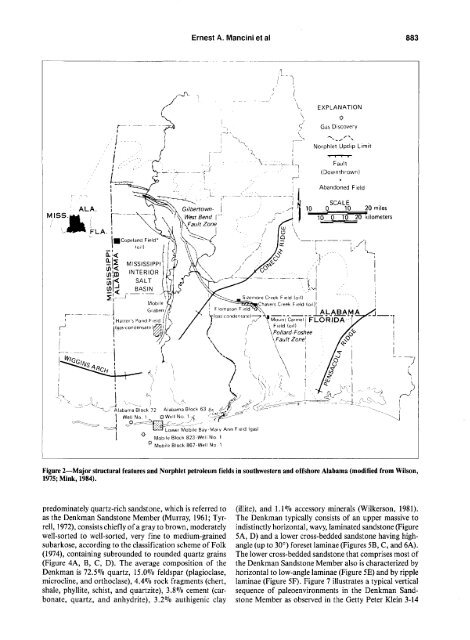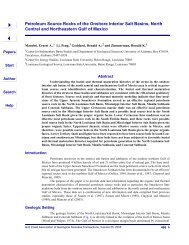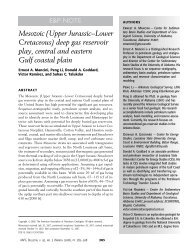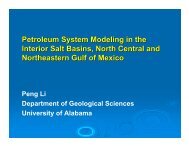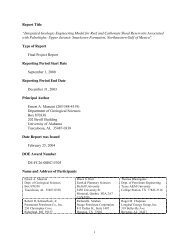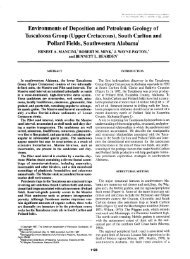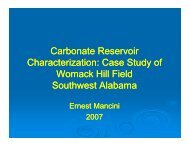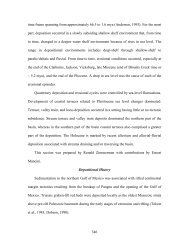Norphlet Formation (Upper Jurassic) - Berg - Hughes Center
Norphlet Formation (Upper Jurassic) - Berg - Hughes Center
Norphlet Formation (Upper Jurassic) - Berg - Hughes Center
You also want an ePaper? Increase the reach of your titles
YUMPU automatically turns print PDFs into web optimized ePapers that Google loves.
Ernest A. Mancini et al 883EXPLANATIONGas Discovery<strong>Norphlet</strong> Updip LimitMISS.20 miles10 0 10 20 kilometers^'Lowei Mobile Bay-Mary Ann Field (gasiMobile Block 823-Well NoMobile Block 867-Well NoFigure 2—Major structural features and <strong>Norphlet</strong> petroleum fields in southwestern and offshore Alabama (modified from Wilson,1975; Minii, 1984).predominately quartz-rich sandstone, which is referred toas the Denkman Sandstone Member (Murray, 1961; Tyrrell,1972), consistschiefly of agray to brown, moderatelywell-sorted to well-sorted, very fine to medium-grainedsubarkose, according to the classification scheme of Folk(1974), containing subrounded to rounded quartz grains(Figure 4A, B, C, D). The average composition of theDenkman is 72.5% quartz, 15.0% feldspar (plagioclase,microcUne, and orthoclase), 4.4% rock fragments (chert,shale, phyllite, schist, and quartzite), 3.8% cement (carbonate,quartz, and anhydrite), 3.2% authigenic clay(illite), and 1.1% accessory minerals (Wilkerson, 1981).The Denkman typically consists of an upper massive toindistinctly horizontal, wavy, laminated sandstone (Figure5A, D) and a lower cross-bedded sandstone having highangle(up to 30°) foreset laminae (Figures 5B, C, and 6A).The lower cross-bedded sandstone that comprises most ofthe Denkman Sandstone Member also is characterized byhorizontal to low-angle laminae (Figure 5E) and by ripplelaminae (Figure 5F). Figure 7 illustrates a typical verticalsequence of paleoenvironments in the Denkman SandstoneMember as observed in the Getty Peter Klein 3-14


